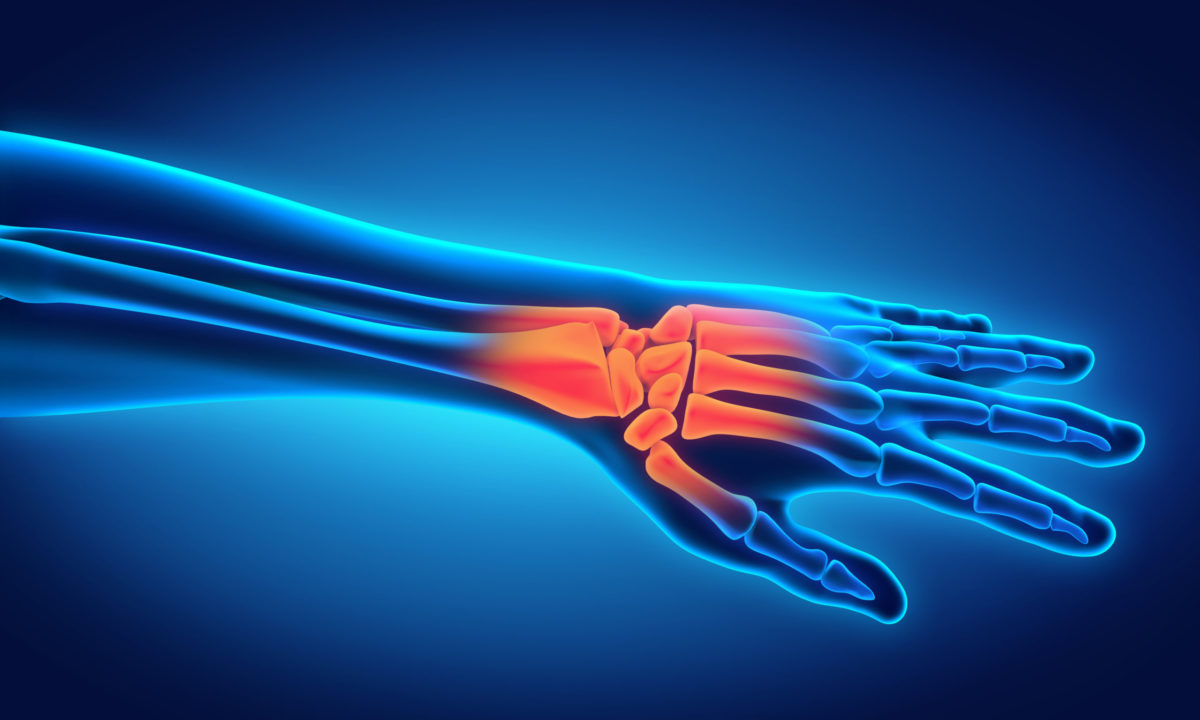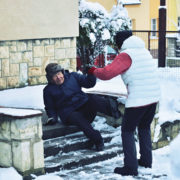
What a Dislocated Wrist Bone Actually Means
The wrist itself is a joint made up of eight small bones known as carpals. These are held together by ligaments; tough, elastic tissue that gives your hand its structure and stability. However, a severe force can tear these ligaments, and allow two or more carpals to move out of position, leading to a dislocated wrist bone or dislocated wrist joint.
Common Causes of Dislocation
The two bones in the hand and wrist that are most common in dislocation injuries are known as the capitate and the lunate. The capitate is the largest bone in the hand, located in the lower palm. The lunate is located between the capitate and the ulna (the long bone in the forearm.)

Dislocations occur in traumatic injuries where a great force to the hand and fingers causes the wrist to bend backward, or a fracture to the forearm causes damage to the ligaments. There are four different types of dislocation people commonly experience, which include:
-
Anterior lunate dislocation
This type of dislocation occurs when the lunate bone rotates, but the other wrist bones stay in place. It is not particularly common, only making up around 10% of wrist injuries, with these primarily coming from young adults playing high-impact sports.
-
Perilunate dislocation
This type of lunate dislocation occurs when the radioscaphocapitate (RSC) ligament, the scapholunate interosseous (SLI) ligament, and the lunotriquetral interosseous (LTI) ligament are damaged, resulting in the perilunate bone rotating. It is often the result of either a fall onto an outstretched hand or a motor vehicle crash. It is one of the most dangerous closed-wrist injuries, as it is often missed on initial imaging.
-
Galeazzi fracture
This type of dislocation stems from a break in the radius bone, resulting in a dislocation of the radioulnar joint. This is most commonly the result of a fall on an outstretched hand. However, there are actually two different groups of who this affects and why. Galeazzi fractures are typically found in either younger men with high-energy trauma (sports, vehicle accidents, falls from a height), or older women with low-energy trauma (falls from ground level.)
-
Monteggia fracture
This type of dislocation involves a break in the ulna, leading to a dislocation at one of the ends of the radius. Like the Galeazzi fracture, this is often the result of falling on an outstretched hand. Unlike the other dislocations, Monteggia fractures are rare in adults, and are instead, most common in children ages four to ten.
The Differences Between Dislocation, Fractures, and Sprains
In addition to different types of fractures, the wrist can also experience dislocations and sprains. This is why it is important to seek the aid of a knowledgeable, skilled orthopedic doctor. An orthopedic specialist who focuses on the hand and wrist can provide the proper diagnosis and treatment plan.
-
Dislocated Bones
Dislocated bones occur when the ligaments holding the bones in place are damaged, allowing the bones to move. While wrist bone dislocation can be the result of a fracture, it does not entail damage to the wrist bones themselves.
-
Fractures
This can have many of the same causes as a dislocation, but actually involves one or more carpals being broken. The bone may break into two or more pieces depending on the nature of the injury.
-
Sprains
A sprain is the least severe of the orthopedic wrist injuries. It occurs when ligaments in the hand are torn or broken, but this does not result in a dislocation. Like other wrist injuries, it can be the result of a sports collision, a motor vehicle accident, or a fall on the wrist.
Treatment Options for a Dislocated Wrist Bone
Addressing a dislocated bone immediately is vitally important to prevent complications. Visiting an orthopedic urgent care facility will give you the best idea of the type and severity of your injury, allowing you to make an informed treatment plan. Once an MRI or X-ray is taken of the wrist, there will be a range of treatment options depending on severity. Naturally, the most conservative treatment option is considered first.
- Rest, ice, compression, and elevation (RICE.)
- Anti-inflammatory medication for pain relief.
- Splint or sling to immobilize wrist during healing.
- Cast to stabilize the wrist while it heals.
- Physical therapy to strengthen the area around the dislocation or fracture
- Surgery, if the injury is especially traumatic and extensive.
Experience Exceptional Orthopedic Injury Treatment From EmergeOrtho—Triangle Region
Fractures, sprains, and dislocations can cause debilitating pain and devastating complications, but with the right intervention, patients can make a full recovery. Consult with EmergeOrtho—Triangle Region’s Hand and Wrist specialists for patient-centered, personalized care.
To learn more, schedule an appointment now. Or, call us any time at (919) 220-5255.







